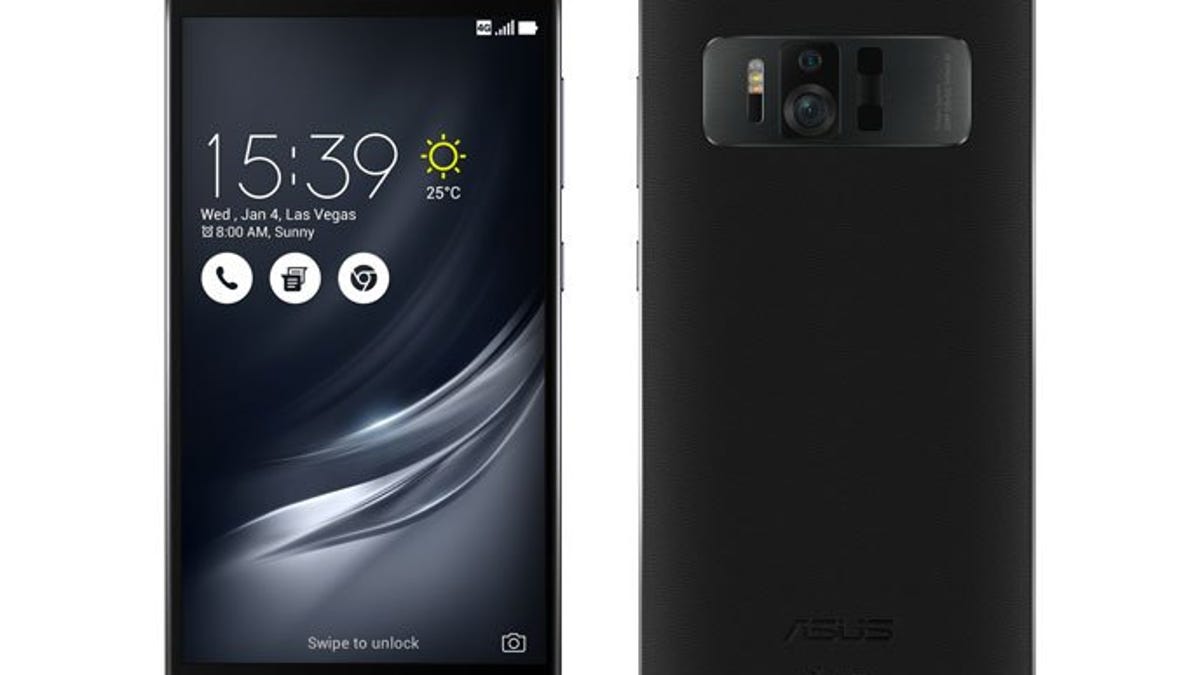Asus Zenfone AR set to blend VR and AR on a single phone
Google's Daydream and Tango tech are about to come together in the same phone for the first time ever, according to a press release leaked by Qualcomm.

Asus' next phone looks like it just got revealed.
Virtual reality ? Augmented reality? Asus is working with Google to release a phone that does both, and it's being built with Qualcomm's chips.
A leaked announcement via Qualcomm in advance of Asus' January 4 CES press conference revealed the Asus Zenfone AR, a phone that merges Google's Daydream View VR platform and its Tango depth-sensing cameras. A likely photo of the phone was posted by @evleaks (see above). Its camera array looks smaller than Lenovo's first Tango phone, the Lenovo Phab 2 Pro.
The Zenfone AR also boasts a faster Qualcomm Snapdragon 821 processor than the Phab 2 Pro, putting it more on par with Google's Pixel phones.
Google's previous phones that work with its new Daydream VR platform include the Pixel, Pixel XL and the Motorola Z, while the only Tango-equipped phone was the Phab 2 Pro. Our experiences with it last year were promising, but very mixed.
Zenfone AR, however, could bridge the gap between augmented and virtual reality, something Google's VP of VR, Clay Bavor, has aimed for since bringing Tango and Daydream under one umbrella last year.
Combining VR and a movement-sensing, location-aware camera like Tango could lead to virtual reality apps and games tracking movement across a room, enabling VR experiences like those available on higher-end systems like the PC-based HTC Vive that otherwise require external boxes or sensors.
Perhaps Zenfone AR will be a blueprint to exploring where Android's next-generation phones will go next. We'll have to wait to hear more at Asus' press conference on January 4.

